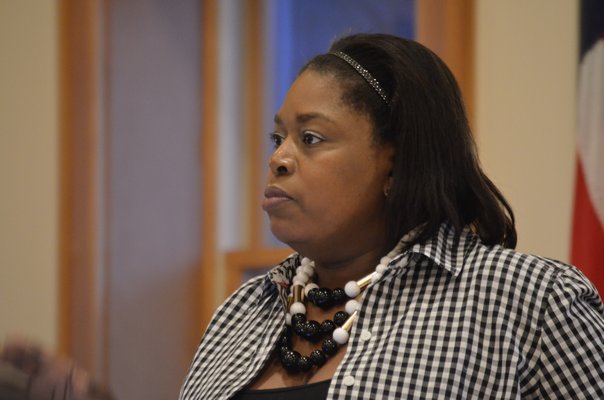
Three traditionally African-American neighborhoods in Sag Harbor are changing as investors and developers buy into the communities—and residents are searching for ways to preserve the cultural significance that came along with its settlers some 65 years ago.
Homeowners in the Sag Harbor Hills, Azurest and Ninevah subdivisions have petitioned Sag Harbor Village Mayor Sandra Schroeder to examine the area’s culture and history with an eye toward awarding some sort of landmark designation to preserve its character. That effort continued on Friday night with an informational meeting at St. Andrews Church.
“There is an integral part that African-Americans play in the history of Sag Harbor,” said Renee Simons, a Sag Harbor Hills resident, before at least 50 other Sag Harbor community members.
“This, today, is the beginning of our effort to get going with our own history and help and participate in the Americana history,” said Ms. Simons, adding that there is a wealth of stories from the area that need to be heard and passed down, she said.
One name on the sign-in log for the meeting happened to be that of Bruce Bronster, a Manhattan attorney who has either been purchasing or representing the new owners of a number of recently sold parcels in the historically African-American communities.
The Sag Harbor Hills, Azurest and Ninevah subdivisions were settled by working-class African-Americans, many looking for a beach getaway where they would be accepted in a time of segregation. Providing the three neighborhoods—collectively known as SANS—with some sort of status, such as a historical conservation or landmarking designation, would not only preserve those stories but also allow for protection and government funding for projects such as beach improvement or beautification of the communities, according to Dr. Georgette Grier-Key, executive director and curator of the Eastville Community Historical Society of Sag Harbor.
The subdivisions demonstrate the economic attainment of black families and a high level of black professionals, as well as certain styles of art movements, architecture and stories of generational existence, Ms. Grier-Key said.
To document the case for some sort of official historic recognition, the communities must collect their stories, using whatever primary resources they have, such as census records, ship logs and other documents, she explained.
“The only way for us to figure out what it is we have, and what it is we can get, is a cultural survey,” Ms. Grier-Key said. The survey would include a list of all the houses that would be in a proposed historic district and would help determine exactly what kind of designation the communities could receive. The survey could cost about $20,000, according to Ms. Grier-Key.
Sarah Kautz, preservation director for the Society for the Preservation of Long Island Antiquities, looked into the history of the development and found an example of architecture that could help the cause though Amaza Lee Meredith, one of the country’s first documented African-American female architects. She had designed homes for friends and family in Sag Harbor, where she and her sister, Maude Kenney Meredith Terry, helped to settle Azurest.
A couple of residents asked whether a designation would restrict any changes they might want to make to their homes.
“If you get that designation, that normally increases the value of the property,” said Sag Harbor Village Board of Historic and Architectural Review Board Chairman Anthony Brandt at the meeting. He reminded residents that there are already rules in place that require Sag Harbor residents to get approval to make certain changes to their properties.
“We adjudicate those rules,” Mr. Brandt said. “That’s the function of our board and it applies all across the whole village. You have to go through me if you want to take down your porch.”